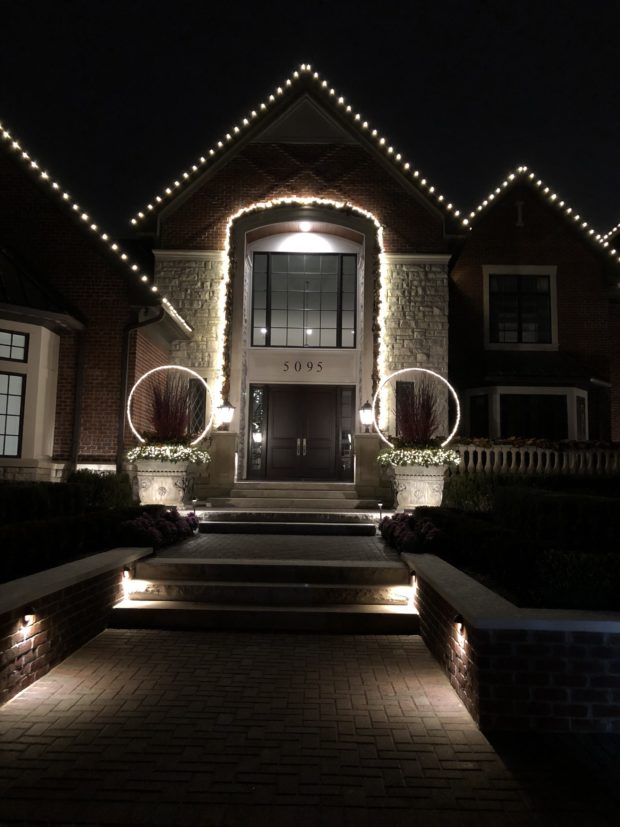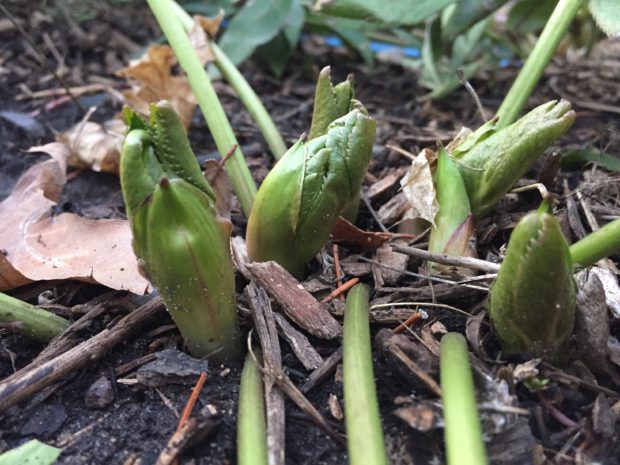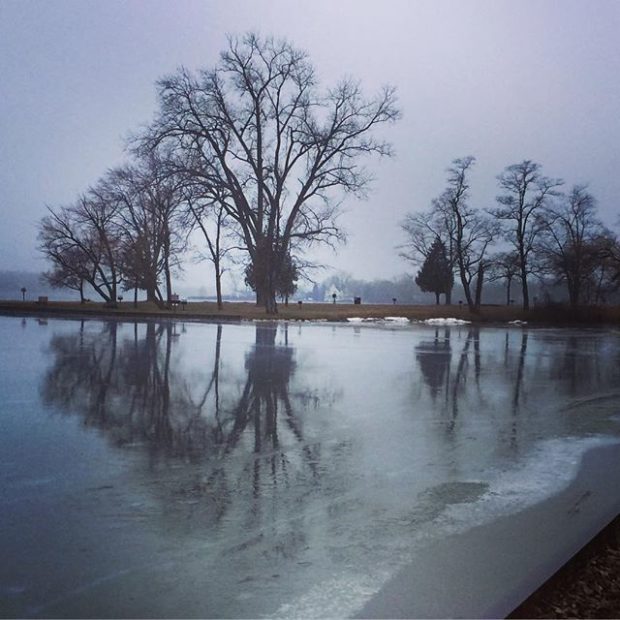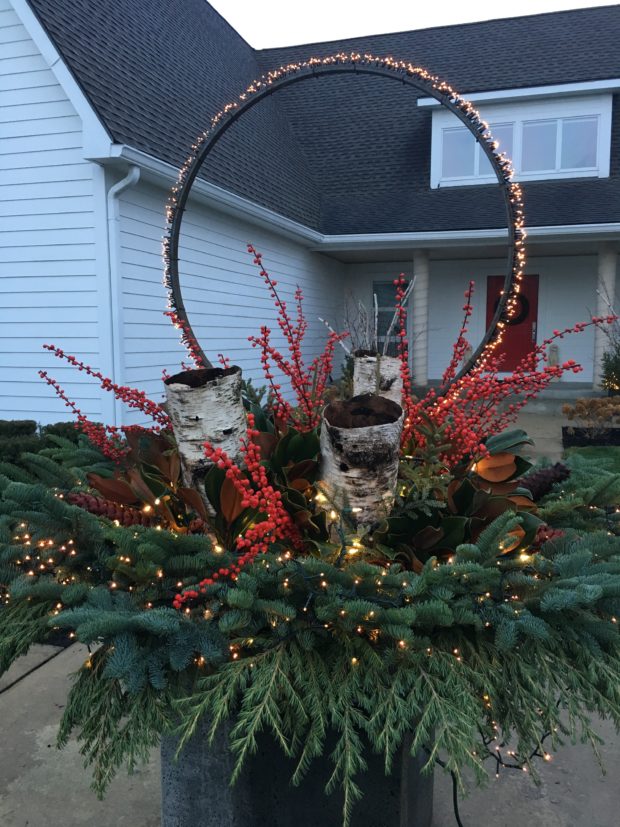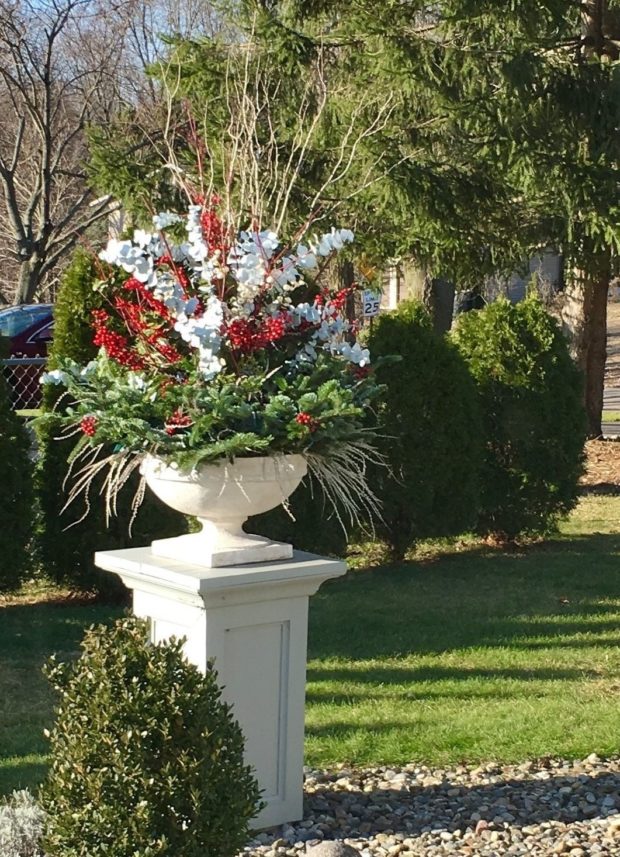 The moment I saw this winter project, I knew a lighted garland wrapped around the front door surround would bring all of the winter elements together. A garland attached to that limestone surround some 25 feet off the ground that would describe the entrance to this home is the stuff of fairy tales. I told my client it would take a lot of people and equipment to make this happen. There would be no ladder tall enough and safe enough for an installation at this height. Expecting her to say no, she said yes. Given her go ahead, Templeton Building Company was kind enough to send out four sections of scaffolding, and two of their people to set screws in the mortar over the doorway, and down the sides. Four of my crew met the two from Templeton early one morning.
The moment I saw this winter project, I knew a lighted garland wrapped around the front door surround would bring all of the winter elements together. A garland attached to that limestone surround some 25 feet off the ground that would describe the entrance to this home is the stuff of fairy tales. I told my client it would take a lot of people and equipment to make this happen. There would be no ladder tall enough and safe enough for an installation at this height. Expecting her to say no, she said yes. Given her go ahead, Templeton Building Company was kind enough to send out four sections of scaffolding, and two of their people to set screws in the mortar over the doorway, and down the sides. Four of my crew met the two from Templeton early one morning.
 I was not especially happy about the process. The scaffolding was on wheels, for starters. Really? It got built skyward, section by section, until it was high enough to provide a place to work. Would I want to be up there working? No. Was I worried about each and every one of them climbing this expanded ladder to the sky-yes I was. It only took Matt 40 minutes to set the screws that would hold both the magnolia garland, and the light garland. So far, so good. My crew on the ground delivered the materials to those people who were aloft.
I was not especially happy about the process. The scaffolding was on wheels, for starters. Really? It got built skyward, section by section, until it was high enough to provide a place to work. Would I want to be up there working? No. Was I worried about each and every one of them climbing this expanded ladder to the sky-yes I was. It only took Matt 40 minutes to set the screws that would hold both the magnolia garland, and the light garland. So far, so good. My crew on the ground delivered the materials to those people who were aloft.
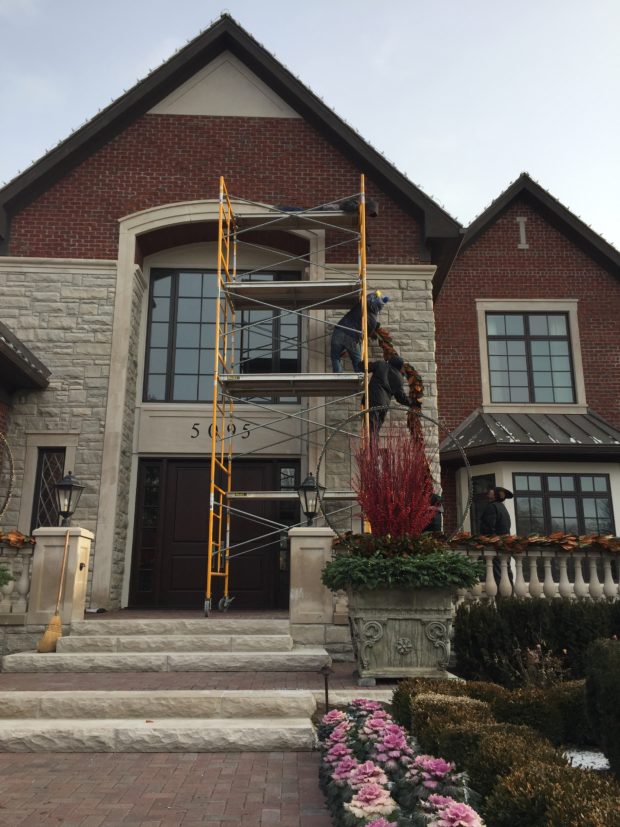 Once the screws were in place, LaBelle made his way up the scaffolding, hauling one end of the magnolia garland. David LaBelle is a leading fabricator for my company, the Branch Studio, and he has no fear of heights, or scaffolding. I cannot imagine how that can be, but he seemed relaxed about it, and I knew he would be entirely capable of wiring on the garlands. As the scaffolding was but 7 feet wide, we would have to install one side of the garland at a time, and then move the scaffolding to the other side.
Once the screws were in place, LaBelle made his way up the scaffolding, hauling one end of the magnolia garland. David LaBelle is a leading fabricator for my company, the Branch Studio, and he has no fear of heights, or scaffolding. I cannot imagine how that can be, but he seemed relaxed about it, and I knew he would be entirely capable of wiring on the garlands. As the scaffolding was but 7 feet wide, we would have to install one side of the garland at a time, and then move the scaffolding to the other side.
 The top surface of the top layer of scaffolding was only one board wide. LaBelle was not in the least bit concerned. The best part of all of my companies are the people who make things happen. Our group of 20 something has varying skills. The variety of work we are able to do depends on this.
The top surface of the top layer of scaffolding was only one board wide. LaBelle was not in the least bit concerned. The best part of all of my companies are the people who make things happen. Our group of 20 something has varying skills. The variety of work we are able to do depends on this.
 Once the first sections of garland came down the right and left side, I knew the big effort to set lighted garland over this two story doorway was a good idea. The final sections of garland could be attached from a ladder.
Once the first sections of garland came down the right and left side, I knew the big effort to set lighted garland over this two story doorway was a good idea. The final sections of garland could be attached from a ladder.
 Once the magnolia garland was secured, the light garland went up next. The garland is 50 feet long overall, and is comprised of a 100 foot strand of LED C-9 lights, and a 100 foot strand of Lumineo mini LED lights, each folded in half, and twisted together. Frequent zip ties keep the twist from unraveling.
Once the magnolia garland was secured, the light garland went up next. The garland is 50 feet long overall, and is comprised of a 100 foot strand of LED C-9 lights, and a 100 foot strand of Lumineo mini LED lights, each folded in half, and twisted together. Frequent zip ties keep the twist from unraveling.
 LaBelle was ready to take this light garland up high. The LED lights represent a vast improvement in exterior lighting. This garland is amazingly light weight. LED’s now have a quality of light very similar to warm incandescent lighting. They consume very little power, and are economical to run. But the best feature for us is the fact that the light covers are plastic – not glass. They are shatterproof. So no harm if you drop them, or bang them against a brick wall. When first introduced, the big bulb LED lights were very expensive. 1 25′ strand would run 27.00. That same strand is less than 10.00 now.
LaBelle was ready to take this light garland up high. The LED lights represent a vast improvement in exterior lighting. This garland is amazingly light weight. LED’s now have a quality of light very similar to warm incandescent lighting. They consume very little power, and are economical to run. But the best feature for us is the fact that the light covers are plastic – not glass. They are shatterproof. So no harm if you drop them, or bang them against a brick wall. When first introduced, the big bulb LED lights were very expensive. 1 25′ strand would run 27.00. That same strand is less than 10.00 now.
 The lighted magnolia garland over this door is beautiful – day and night. The backs of the leaves echo the color of the brick and wood architectural elements.
The lighted magnolia garland over this door is beautiful – day and night. The backs of the leaves echo the color of the brick and wood architectural elements.
 From the drive court, the scale of every winter element looks appropriate. From the ground plane to the sky, this winter landscape has a lot going on. That lighted magnolia garland better than two stories up over the front door does not look too big or overly elaborate. It is fairly simple, just sized to fit.
From the drive court, the scale of every winter element looks appropriate. From the ground plane to the sky, this winter landscape has a lot going on. That lighted magnolia garland better than two stories up over the front door does not look too big or overly elaborate. It is fairly simple, just sized to fit.
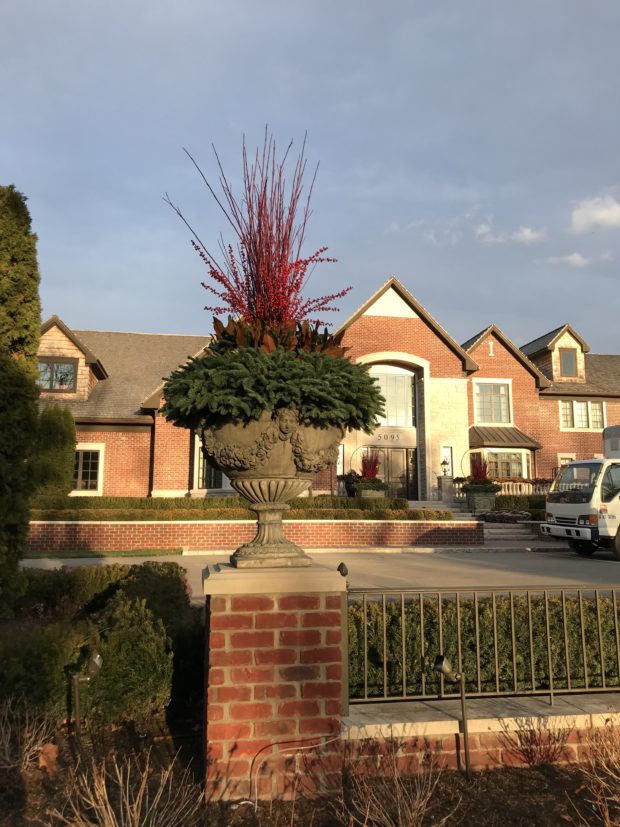 From the far side of the drive court, some rare late day December sun describes a landscape and garden ready for winter. This winter landscape has volume, structure, texture, mass, -and most importantly, lighting. A routine winter day in Michigan is gray.
From the far side of the drive court, some rare late day December sun describes a landscape and garden ready for winter. This winter landscape has volume, structure, texture, mass, -and most importantly, lighting. A routine winter day in Michigan is gray.
 Once the December light fades, there is a garden to be seen of a different sort. Light your own winter landscape as you wish. I would suggest that any effort you make to light the landscape is well worth the effort.
Once the December light fades, there is a garden to be seen of a different sort. Light your own winter landscape as you wish. I would suggest that any effort you make to light the landscape is well worth the effort.
